This is one of my personal favorites — the underdog that could challenge Tyrannosaurus for the throne. Meet Carcharodontosaurus, the “Shark-toothed Lizard”, a massive carnivorous dinosaur that roamed North Africa during the Late Cretaceous period, roughly 99 to 94 million years ago. It belonged to the theropod group and was one of the largest carnivorous animals to have ever walked the Earth. This article aims to explore the discovery, anatomy, adaptations, and broader scientific importance of Carcharodontosaurus.

Discovery History
Carcharodontosaurus‘ discovery is as intriguing as the dinosaur itself. The first fossils of this giant predator came to light in the early 20th century in North Africa. This dinosaur’s story started with two fossilized teeth found in Algeria in 1924. These teeth, described by French paleontologists Charles Depéret and Justin Savornin, were initially attributed to Megalosaurus, which had been recently discovered. However, these teeth were different, hinting at a creature far larger and more formidable than previously documented theropods.
The narrative took a significant turn in 1931 when German paleontologist Ernst Stromer formally described Carcharodontosaurus. The dinosaur’s name was inspired by the shark-like serrations on the teeth reminiscent of the great white shark (Carcharodon carcharias). Stromer’s work was based on a more substantial find in Egypt where partial skeletons pointed towards an immense theropod. Tragically, these invaluable specimens were destroyed during World War II, erasing irreplaceable evidence of Carcharodontosaurus‘ existence.
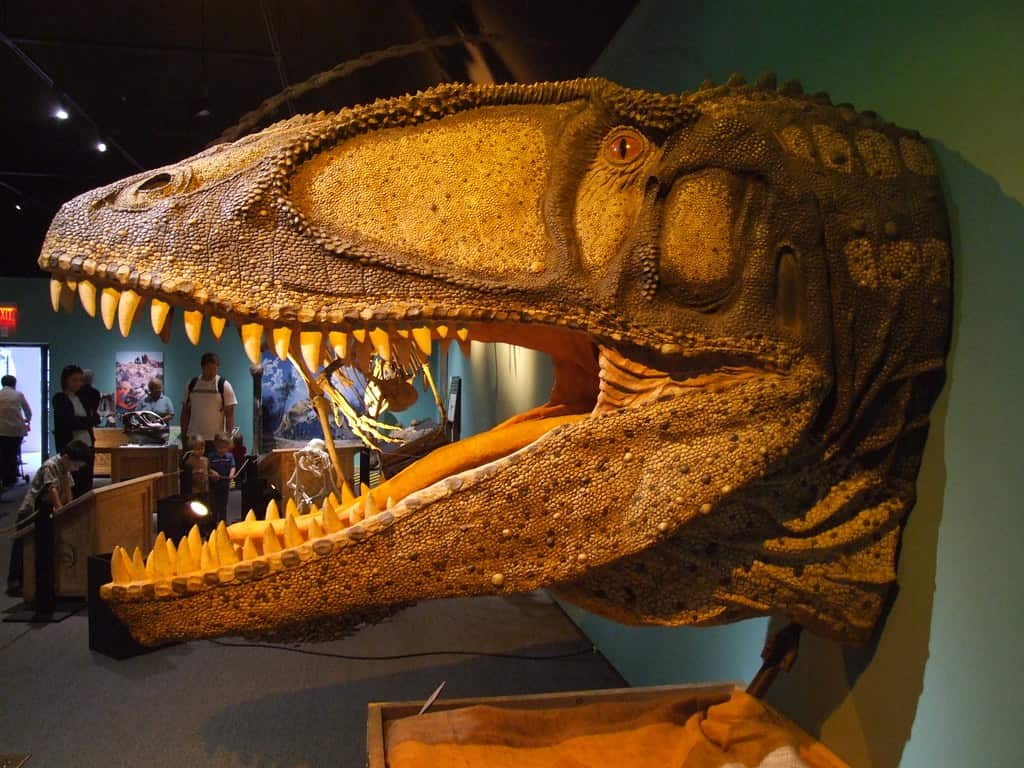
Decades passed with no further signs of Carcharodontosaurus until 1995 when a nearly complete skull was unearthed in the Kem Kem Beds, Morocco. This discovery came alongside other significant finds in the following years, including the designation of a new species, C. iguidensis, in 2007 from Niger. These new fossils were complete enough to paint a more detailed picture of Carcharodontosaurus.
Description and Size
Carcharodontosaurus saharicus, the larger species within its genus, was the apex predator of the Late Cretaceous North Africa. This theropod dinosaur is recognized for its immense size and distinctive features that set it apart from other contemporary theropods.
Carcharodontosaurus possessed a large, lightly built skull measuring over 1.6 meters in length, comparable to that of the largest Tyrannosaurus skulls. Its jaws were lined with long, sharp, recurved teeth, each serrated like the blade of a saw, comparable to the teeth of great white sharks. The skull featured expanded fossae and fenestrae (hollow spaces and sockets, such as for the eyes), which made it lighter without significantly compromising strength. Such adaptations were crucial for a predator of its size, allowing for swift and efficient movement.
C. saharicus was around 12 meters in length, with a weight of around 6.2 metric tons. These dimensions cement Carcharodontosaurus as one of the largest known theropod dinosaurs, rivaling Spinosaurus, Giganotosaurus, and Tyrannosaurus in size. However, it’s the balance of size and agility that sets this predator apart.

Anatomy and Adaptations
Carcharodontosaurus featured a skull over 1.6 meters long that was both strong and light, accommodating sharp, serrated teeth for slicing through flesh. These teeth, designed more for cutting than crushing, hinted at a strategy focused on inflicting grievous wounds to subdue prey. However, Carcharodontosaurus wasn’t just about its formidable head; the rest of its body was equally outstanding.
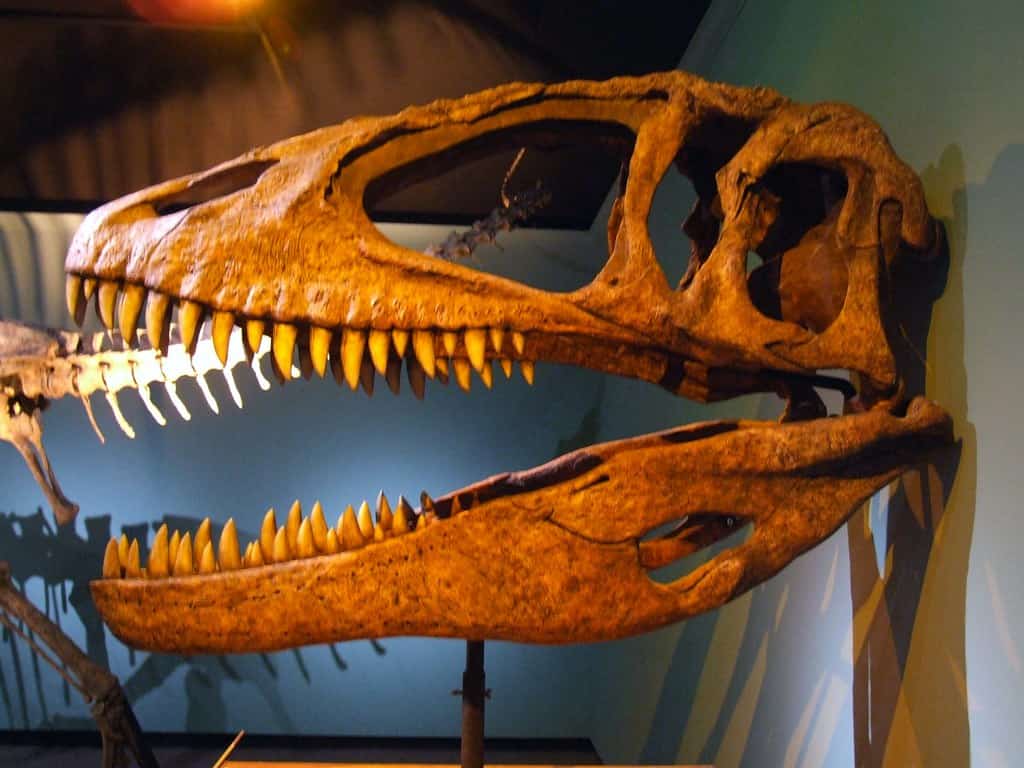
Despite its relatively small forelimbs, akin to other large theropods, its hindlimbs were robust and muscular, supporting rapid acceleration and pursuit. Its elongated tail served as a crucial counterbalance, ensuring stability during high-speed chases or forceful attacks. Air-filled cavities within the vertebrae lightened its skeleton without sacrificing strength, a feature that allowed it to support its massive body and maintain agility. This combination of agility, power, and a lethal bite suggests Carcharodontosaurus hunted using ambush and pursuit tactics.
Diet and Hunting Behavior
Carcharodontosaurus employed a specialized set of hunting and feeding strategies, aligning with its status as an apex predator. Its diet primarily consisted of large herbivorous dinosaurs. The animal’s sharp, serrated teeth were its primary tools for slicing through flesh, allowing it to tackle prey much larger than itself. Paleontologists speculate that Carcharodontosaurus was a sauropod (long-neck dinosaur) killer. This theropod likely ambushed its prey, leveraging its powerful legs for a sudden burst of speed, followed by a series of lethal bites delivered by its massive jaws.
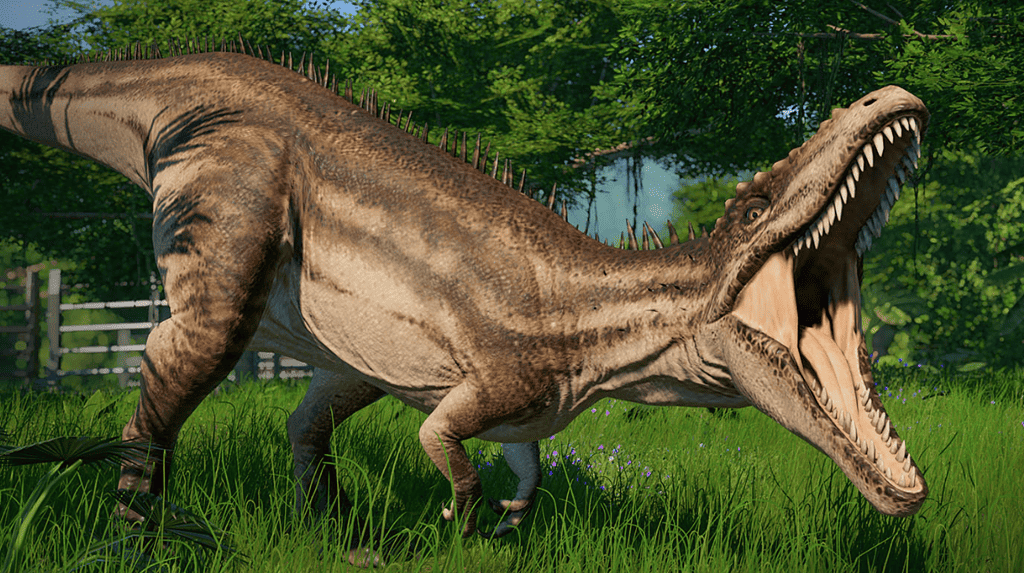
Despite having one of the most powerful bites among theropods, its bite force was relatively weaker compared to that of Tyrannosaurus rex. One 2022 study found Carcharodontosaurus had about half the bite force of T. rex, although being about the same size. This difference suggests that Carcharodontosaurus relied more on slashing and slicing motions rather than delivering bone-crushing blows.
Paleontologists believe that Carcharodontosaurus was a solitary hunter, like most large theropods, stalking its prey before launching a swift attack. The dinosaur’s tail, long and balanced, served as a counterweight, aiding in maneuverability during high-speed pursuits or confrontations with prey. Additionally, its keen senses, particularly sight and smell, would have been crucial for detecting prey over long distances. However, some evidence suggests that it also engaged in opportunistic scavenging, taking advantage of found carcasses.
Paleoecology
The Cretaceous period in North Africa was a time of diverse and dynamic ecosystems. This era was characterized by a mix of arid deserts, lush mangrove forests, and extensive river systems. Within this paleoecological setting, Carcharodontosaurus occupied the top of the food chain. The environment also hosted a rich diversity of plant life, ranging from towering conifers to flowering plants, which were just starting to spread during the Cretaceous.
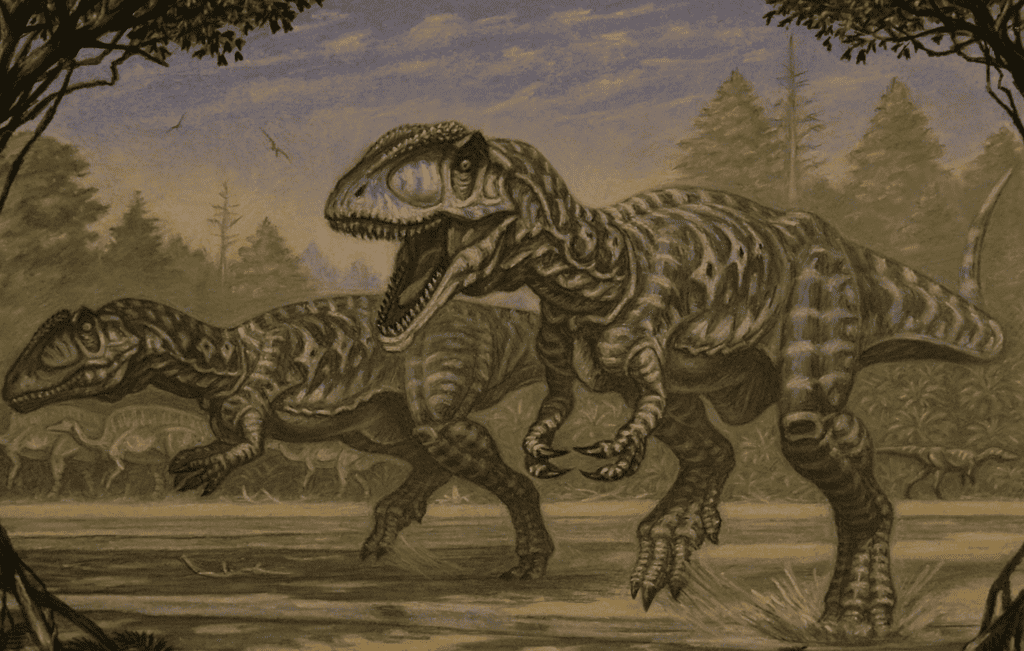
The fauna coexisting with Carcharodontosaurus included a variety of other large theropods, such as the Spinosaurus and the Deltadromeus. Sauropods, such as Paralititan and Aegyptosaurus, roamed the floodplains and forests, feeding on the high vegetation that other herbivores could not reach. These massive long-necked dinosaurs were probably preyed upon by Carcharodontosaurus. Ornithopods, including Ouranosaurus, a hadrosauriform with a distinctive sail-like spine, were also part of this ancient environment. Ouranosaurus, a bipedal herbivore, likely grazed on lower vegetation, filling a different ecological niche from the towering sauropods.
Carcharodontosaurus in Popular Media
Although not as prominently featured as other dinosaurs, Carcharodontosaurus appeared in various forms of media, from television documentaries to video games.
One of the notable appearances of Carcharodontosaurus is in the BBC documentary series “Planet Dinosaur”. This series provides a detailed look at the dinosaur, showcasing it as the apex predator of Cretaceous North Africa. Amazing CGI brings Carcharodontosaurus to life, depicting it in a scientifically accurate manner based on the latest fossil evidence.
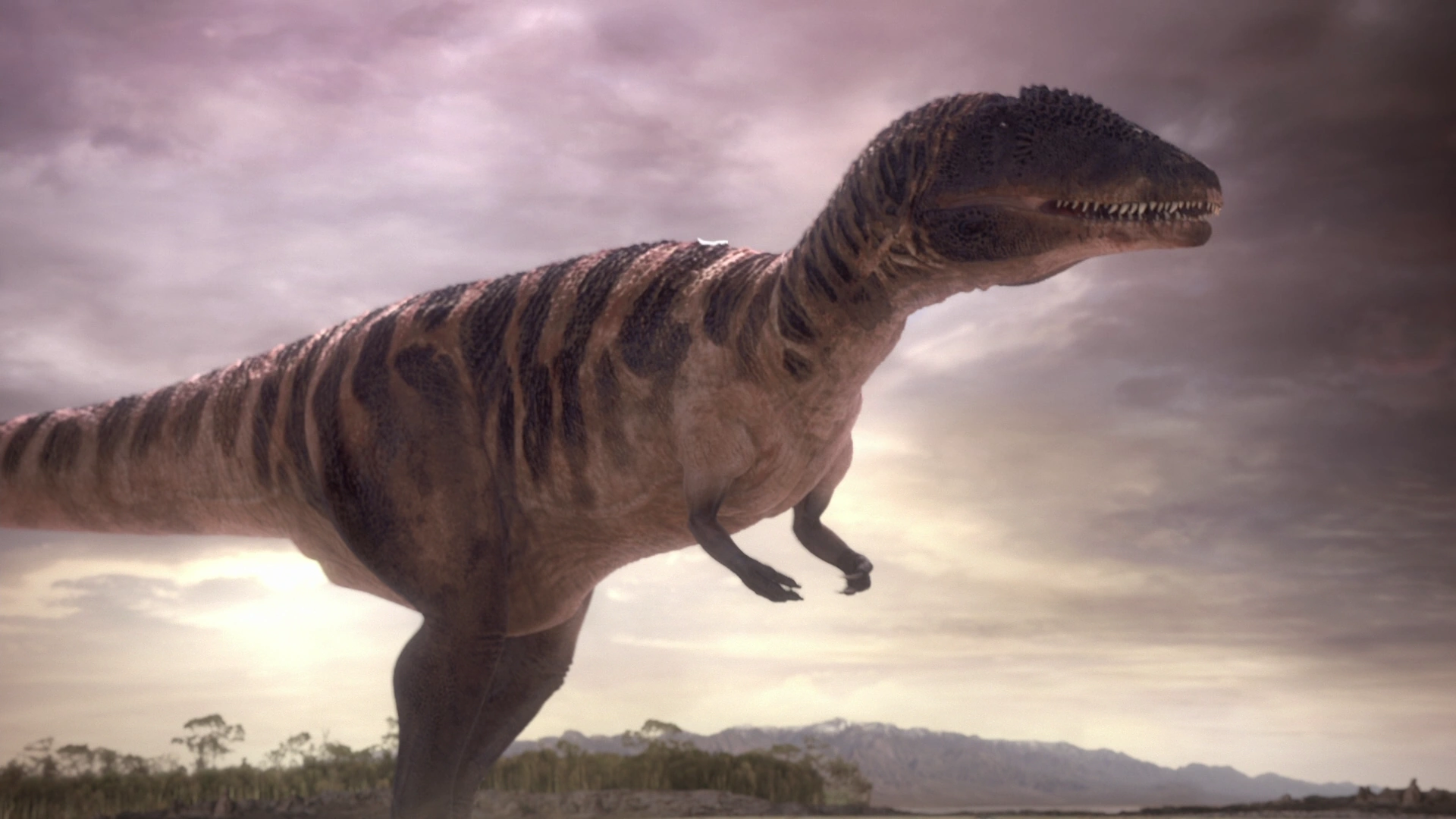
In video games, Carcharodontosaurus was featured in “Jurassic World: Evolution” and “Jurassic Park: Operation Genesis”, strategy and simulation games that allow players to create and manage their own Jurassic Park. In both games, Carcharodontosaurus is one of the dinosaur species players can add to their park.






